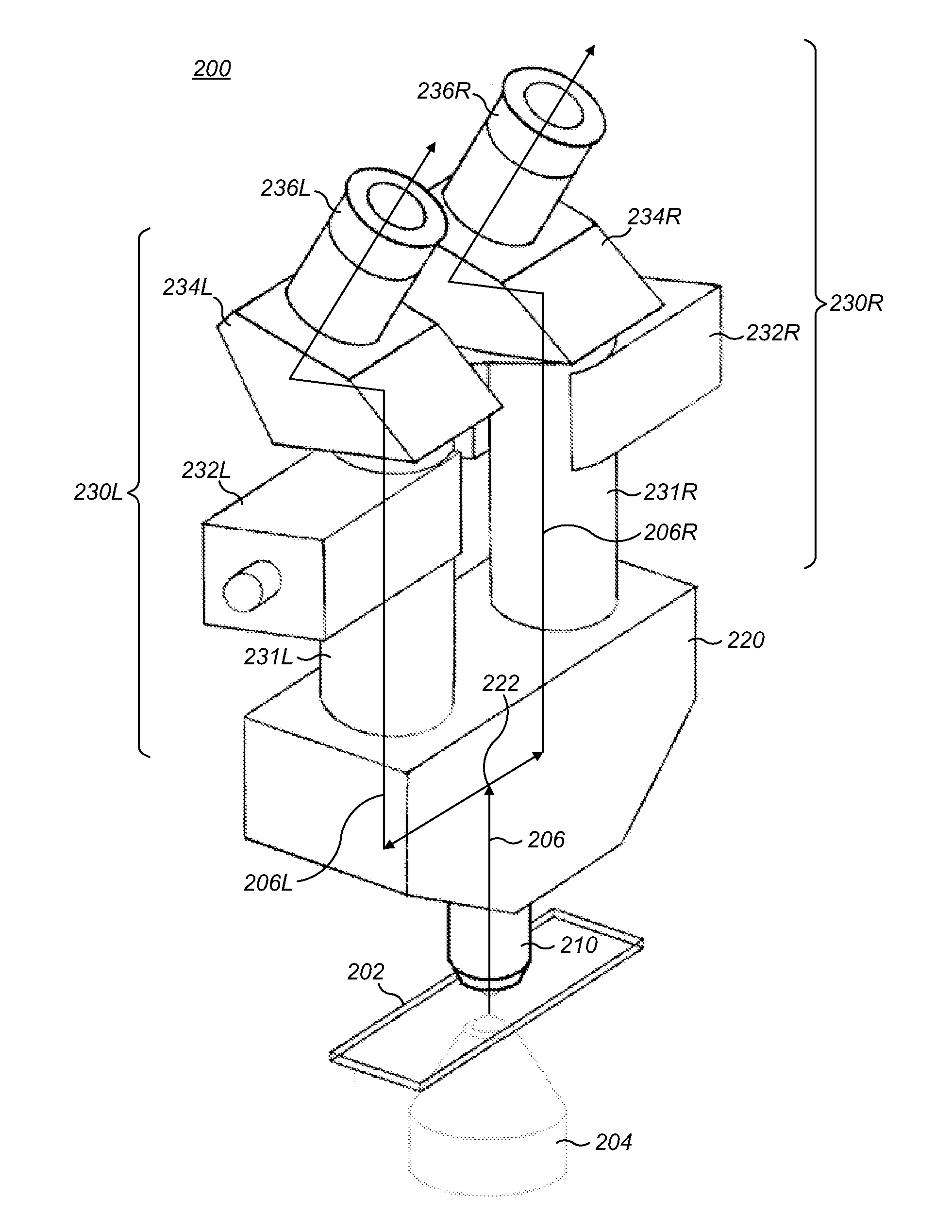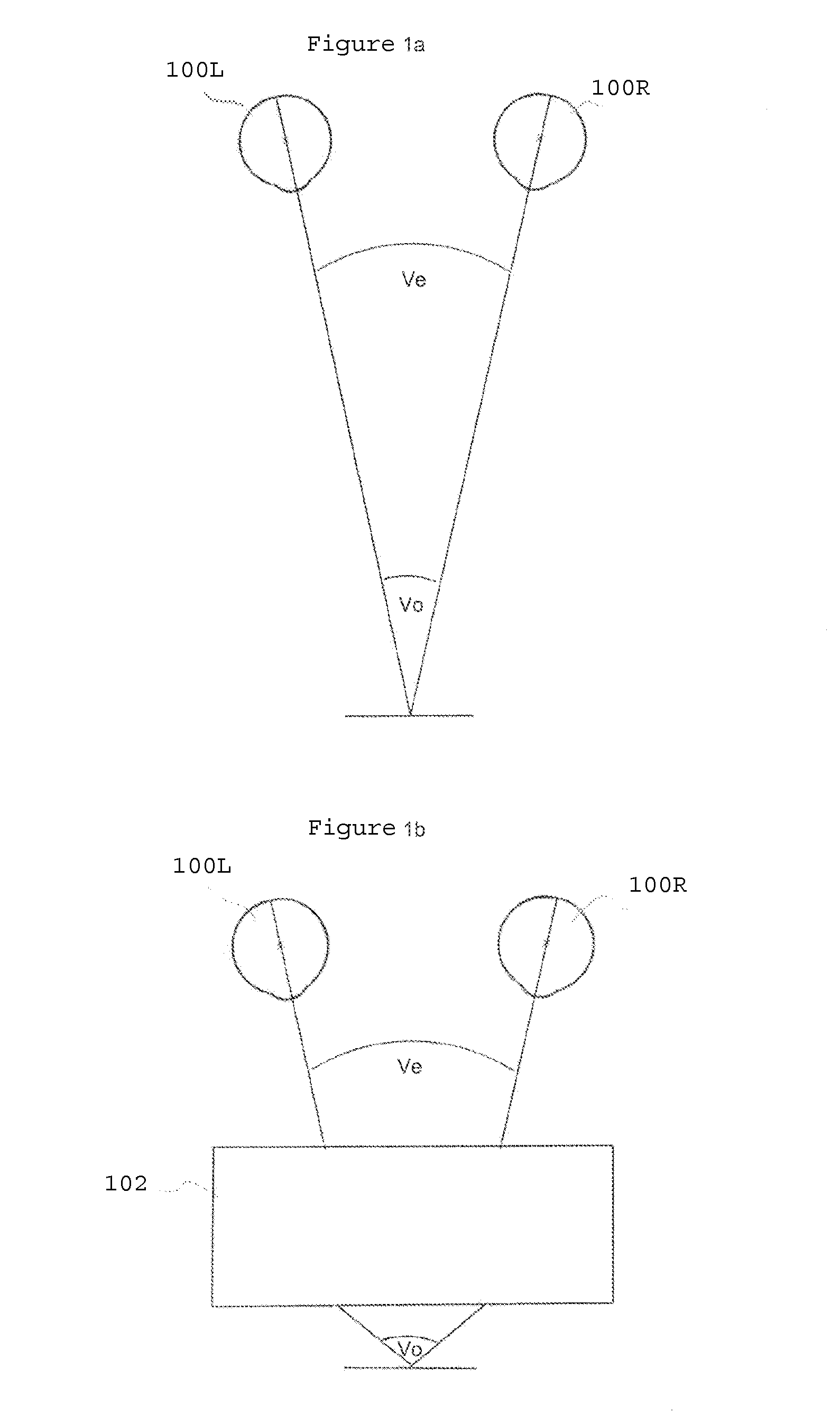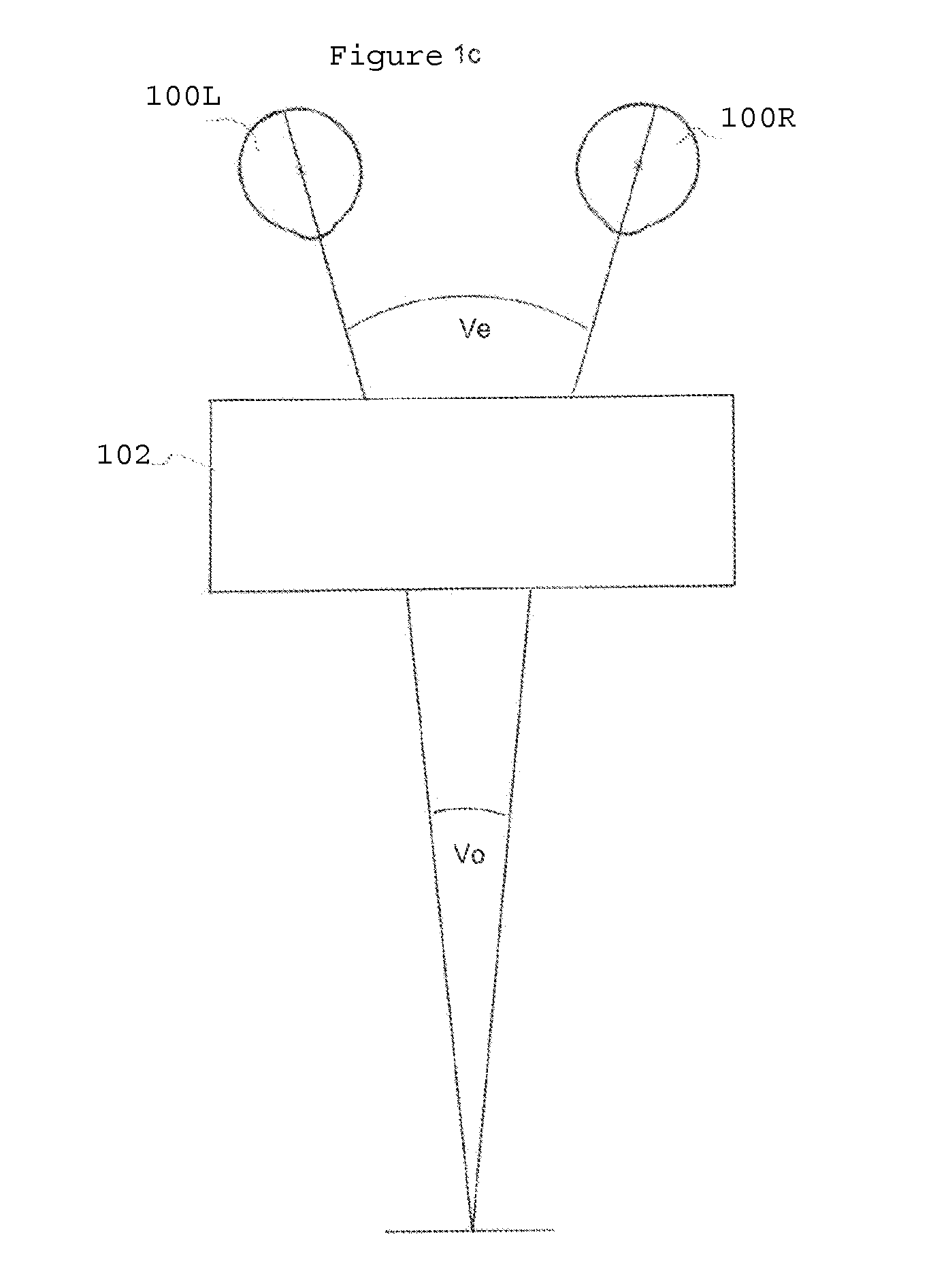Stereoscopic microscope
a stereoscopic microscope and microscope technology, applied in the field of stereoscopic instruments, can solve the problems of not being able to call stereoscopic microscopes, not being able to accurately measure the distance of one point in three, and the true depth perception, so as to reduce the separation of the pupils of the user, increase the second angular relationship, and reduce the effect of the separation of the pupils
- Summary
- Abstract
- Description
- Claims
- Application Information
AI Technical Summary
Benefits of technology
Problems solved by technology
Method used
Image
Examples
Embodiment Construction
[0091]In unaided binocular vision, stereopsis is enabled, in part, by the difference in viewpoints of the left and right eyes; so-called binocular disparity. Because of the spatial separation of a person's eyes, the viewpoints of the two eyes converge on an object being viewed. Typically, the angle of convergence is small, with an upper limit of comfort of about 15°. The viewpoints of a pair of eyes 100L, 100R during unaided vision are shown in FIG. 1a. To achieve orthostereoscopic perception (objects appearing correctly proportioned in three dimensions) the angle of convergence included by the optical axes of an observers left and right eyes 100L, 100R, hereinafter referred to as eye-space vergence, ∠Ve, must equal the angle made by the left and right optical rays diverging from a point on an object, hereinafter referred to as the object-space vergence, ∠Vo. This condition is referred to herein as the “orthostereoscopic condition”. As shown in FIG. 1a, in unaided binocular vision t...
PUM
 Login to View More
Login to View More Abstract
Description
Claims
Application Information
 Login to View More
Login to View More - R&D
- Intellectual Property
- Life Sciences
- Materials
- Tech Scout
- Unparalleled Data Quality
- Higher Quality Content
- 60% Fewer Hallucinations
Browse by: Latest US Patents, China's latest patents, Technical Efficacy Thesaurus, Application Domain, Technology Topic, Popular Technical Reports.
© 2025 PatSnap. All rights reserved.Legal|Privacy policy|Modern Slavery Act Transparency Statement|Sitemap|About US| Contact US: help@patsnap.com



